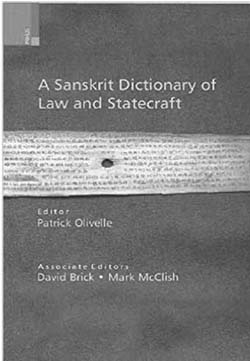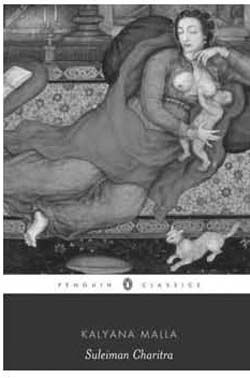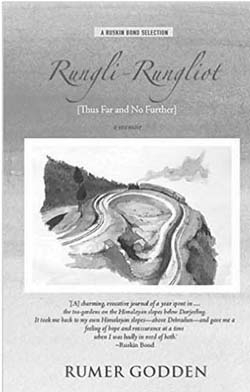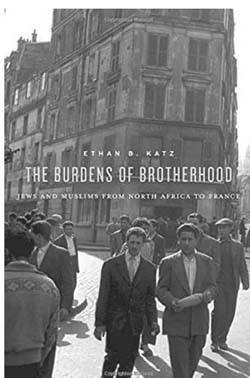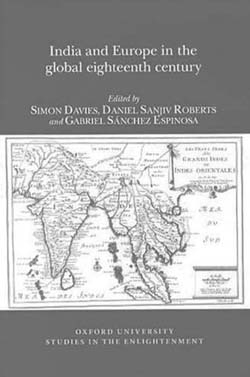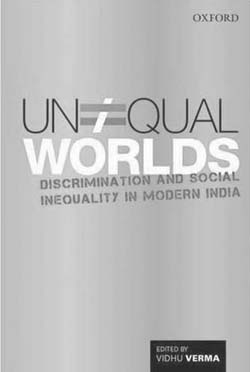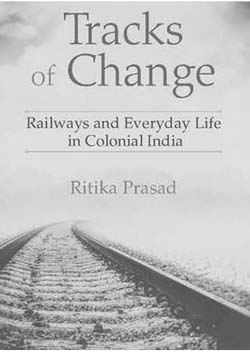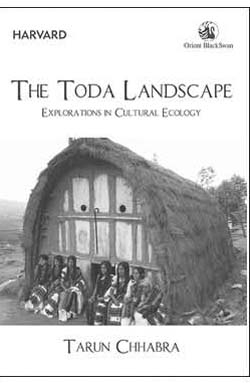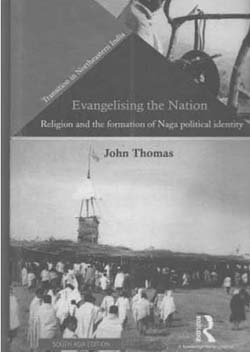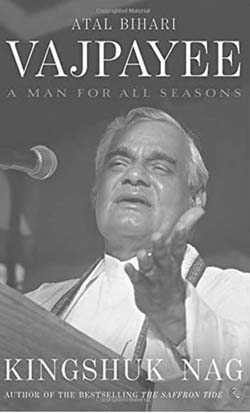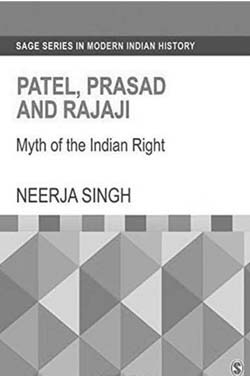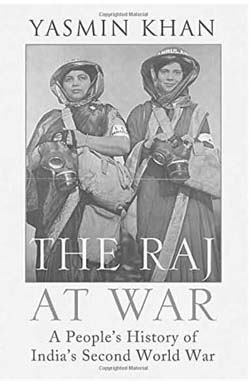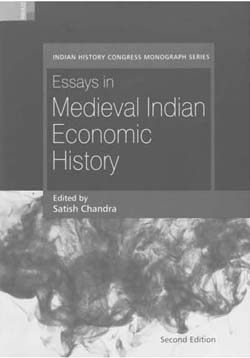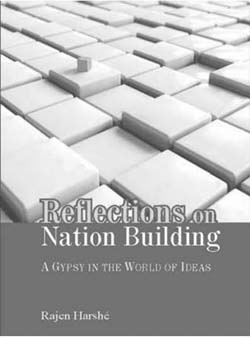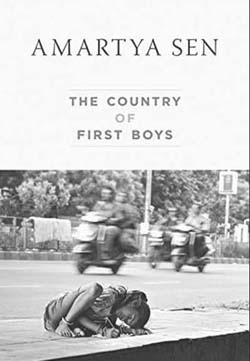Along with Mohan Rakesh, Vijay Tendulkar and Girish Karnad, Badal Sircar was a preeminent playwright who shaped our modern theatre. Ebong Indrajeet (Evam Indrajeet, ‘And Indrajeet’, 1963) and Pagla Ghoda (‘Mad Horse’, 1967) are undisputed classics of the modern Indian stage, translated into several languages and performed across the country. They blazed a trail, and opened new vistas. Badal Sircar was a playwright of great power and technical sophistication.
Archives
May 2016 . VOLUME 40, NUMBER 5The nature and purport of this book is clearly explained by its title. It is a dictionary in English of technical terms, legal, political and administrative, used in the Sanskrit language.Such works on Sanskrit already exist for grammar and priestly rituals. The most recent are Abhyankar and Shukla’s A Dictionary of Grammar, 1986, and Sen’s A Dictionary of Vedic Rituals, 1978. The need for one on law, statecraft and political science prompted the present compilation, it being felt that technical terms on these subjects were not available sufficiently in standard Sanskrit-English dictionaries.
2015
Suleiman Charitra is a truly amazing little book. A short work in Sanskrit from the 16th century, it’s title should be enough of a clue to even the casual reader about its hybrid nature. It is a perfectly synthetic work that, on the surface, tells a story from the Semitic tradition in the form of a classical Sanskrit narrative—the Charitra, i.e., the acts of a great man who might be a king, a hero, or even a god. But below the surface, there are currents and eddies, perhaps even whirlpools, that sweep us off our feet and away into an unexpected story land
In Chinglam, most of what I plan comes true and that has seldom happened to me in any other place. The days were stolen before they had begun; I think I never saw a day. When I was a child I remember days that stretched into infinity with the certainty of other infinite days; certain, unhurried and brimmingly full.For the reader, the beauty of life in a solitary mountainous retreat in the North East is evoked in this very image of time hanging so heavy; the author’s day-to-day journal describes small and unrelated acts of quotidian life, human exchanges, and communion with nature, children and animals minutely one after the other as she reminisces about her life as a recluse for a year.
This study is a broad history of Muslims and Jews in France from World War I to the present times. With half a million Jews and 4 to 6 million Muslims, France is home to the largest Jewish and Muslim populations in Western Europe. It tries to look at how the lives of Jews and Muslims had been entwined on both sides of the French Mediterranean. Historically what we call Jewish-Muslim relations in France were neither inescapably ethno-religious nor necessarily oppositional, rather they interacted on a wide range of terms.
The long eighteenth century was a period of major transformation of the relations between India and Europe, with the advent of imperialism. The English justified colonialism by claiming that oriental despotism was replaced by moral and enlightened government. This claim has long been countered by critiques of imperialism. Some of the earliest of these criticisms emerged as early as the eighteenth century, from what may be termed the peripheries of empire, from Irish statesmen and journalists such as Edmund Burke and William Duane, or from the mythologizing of French imperial figures like Dupleix as purveyors of a superior French system of colonialism.
Reading Unequal Worlds by Vidhu Verma is like reading an epistemological ‘post-mortem’ of the societal context which prompted Rohith Vemula to commit suicide. The book unfolds a number of factors which put Dalits and minorities (read Muslims) to ‘social death’ in their everyday life. Discrimination has been direct, indirect, institutional or structural. It can be seen in institutional biases, social closure to maximize rewards by restricting access to resources and opportunities to a limited circle of the eligible (p. 26); through ‘unruly practices’ (gaps between rules and their implementation).
The history of technology in India, and more specifically that of technological transfer from the metropole to colony, has been narrated from a number of perspectives, ranging from critical (technology as disruption) to laudatory (technology as redemption). In the context of the history of the railways in India, Ian Kerr with his Building the Railways of the Raj (1995) and Engines of Change (2007) has extensively mapped the processes by which the railways were planted, and thrived, in colonial India.
Development and nationalism were two themes highlighted in March 2016 with two major stories in the national media: the Union Budget Announcements 2016-17 and the uproar over sedition (anti-nationalist) charges on a few students of Jawaharlal Nehru University. Hannah Werner’s book The Politics of Dams also deliberates over the same themes. The author keeps the big dams at the centre of the stage and attempts to analyse developmental aims and objectives of the Indian state post Independence, comparing them with the development aims of the colonial state.
This monograph is the product of two decades of research by an amateur ethnographer who, based in the Nilgiri Hills, has devoted time both to the study and support of the Toda community. Chhabra’s work with the Todas crosses the spheres of research, advocacy and friendship. In 1992, he established the Toda Nalvazhvu Sangam (the Toda Welfare Society) to mediate between the local government and the community. Much of the monograph has been published elsewhere and the chapters remain relatively discrete but exceptionally rich explorations of particular facets of the Toda community’s cultural and religious life set carefully within the landscape, flora and fauna of the Nilgiri hills.
Evangelising the Nation by John Thomas is an important study on the making of the Naga nation, and especially its relation with the (Baptist) Church. There are few works which have critically engaged with this relationship. The book covers the period from the late nineteenth century to the last decades of the twentieth century in five chapters. Broadly, there are two inter-related processes which the book deals with. What is equally notable, as the book shows, is that the two processes emerged almost around the same time.
In the year 1996 during an election rally in Lucknow when Atal Bihari Vajpayee stepped on the stage the excited crowd chanted, ‘Hamara PM kaisa ho, Atal Bihari Jaisa ho’. Vajpayee retorted in his characteristic style, ‘Arre PM chodo, pahle MP to banao’. What followed was another round of applause and cheers. Such rallies became Vajpayee’s trademark where he used wit and humour to strike a chord with his listeners instead of empty promises.In his sixties, Vajpayee had a huge following of youngsters who had been brought up in Uttar Pradesh and other States of the Hindi heartland of 1990s and had grown up listening to his poems and anecdotes.
Since the days of her research under the late Professor Bipan Chandra in the 1980s to the publication of Patel, Prasad and Rajaji: Myth of the Indian Right, Delhi University historian Neerja Singh has been engaging with the ‘right-wing politics in the Congress’. Critiquing the ‘Left’ historiography for clubbing Sardar Patel, Rajendra Prasad and Rajagopalachari under the Right Wing fold of the Congress, she offers the argument that these three key leaders of the Congress.
The Raj at War: People’s History of India’s Second World War by Yasmin Khan, an Associate Professor of history at the University of Oxford and a winner of the Royal Historical Society’s Gladstone Prize, 2007, indeed justifies the prestigious award by being another magnum opus after The Great Partition. History from below was the project of subaltern historians during the 1980s, which was a paradigm shift in the study of history itself, by giving due attention to the excluded and marginalized voices and recognizing their important contribution in our society. The Raj at War does not claim to be one such text but it is written on similar lines.
There are certain books that never lose their charm and value despite the passage of time. It is mainly because of the intellectual stimulation their contents give us and the variety of academic debates they initiate. One of such works is Essays in Medieval Indian Economic History edited by Satish Chandra. This volume being a collection of representative articles taken out of the Proceedings of the Indian History Congress (1935–1986) and originally published in 1987 as a part of the Golden Jubilee Celebrations of the Indian History Congress,
The volume under review is a compilation of much that has been published as research papers on Indian education since 2000. They have a very contemporary location in terms of the importance of ideas being discussed, and also the academic relevance of what has been included. Although put together as a reading in the disciplines of Sociology and Social Anthropology, much of the discussion in the introduction as well as in a variety of papers transcends disciplinary boundaries, and poses therefore the challenge of what the integrating framework should be like.
The Gypsy in the World of Ideas by Rajen Harshe is a successful attempt at addressing the issues of Indian society, politics, intellectual history and institutions through the perspective that developed consequent upon Harshe’s longstanding experiences as an academician and institution builder. We can find here idea and praxis mixed together creating thoughtful reading for the readers. Breaking the conventional formats it ardently depends on the use of metaphors and poetic symbols.
This is a recent offering by Amartya Sen, who currently teaches economics and philosophy at Harvard University. He was earlier Master of Trinity College, Cambridge and is a Nobel prize winner.The book contains 13 essays, selected and organized by the editors of The Little Magazine, (TLM) who have resisted the urge to make them ‘contemporary’. They are presented in a chronological manner, covering the broad fields of culture, society and policy. An intimately warm, yet gently provocative, foreword by Gopalkrishna


